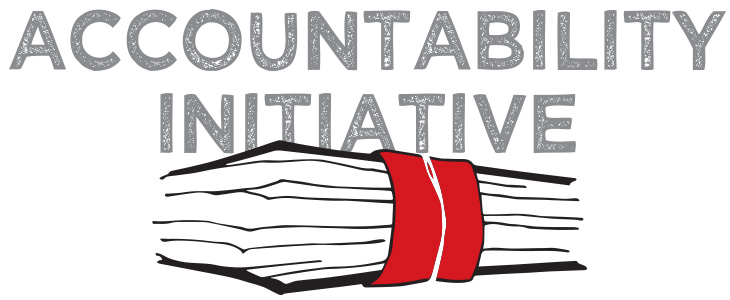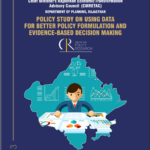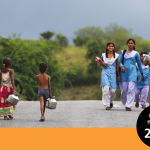
Field notes: Education priorities in Nalanda [Dec 2011]
23 January 2012
In December, Bihar is cold and Nalanda even colder. The fog doesn’t lift till 10.30am and the sun’s warming rays disappear at 5.30pm, heralding the start of a bitter, 3-6 degree chill that lasts for the next fifteen hours or so. Along the roads, cows are blanketed with roughly sewn together vegetable sacks while horses stand shivering uncontrollably. Indoors, there is respite from the wind but not from the cold and with frequent power cuts, even those wealthy enough to be able to access hot water have to go without. If the weather wasn’t bad enough, the 2011 PAISA survey revealed that while the district has been focusing on infrastructure and inputs (building more school toilets and maintaining high levels of training for its teachers), it has some of the highest teacher and classroom to pupil ratios (1:50) in our 9 district study, only 50% of enrolled children attend school on a given day, 50% of funds actually arrive in schools and of these funds, only 50% are spent. Perhaps it is not surprising then that between 09/10 and 10/11, ASER reported that learning levels had fallen on average by 10 percentage points in the district.
The purpose of my trip was to acquaint myself with schools in the district and to meet officials, in order to understand their perspectives on the gains that had been made over the last few years, the challenges they faced and how they thought existing issues could be resolved. My selection criteria for 6 schools was simple – two good schools and two bad (as determined by Pratham agents on the ground), one far from a main road and one that was caste based. The good ones felt lively – there was an energy in the children, the staff seemed proactive and registers and financial records were well kept and organized. The bad were awful – crumbling buildings, a dearth of children even at midday (approx 30% attendance), absent teachers (4 out of 5 in one case) and angry SMC members who sought us out in the school and vented their frustration with both the headmaster and the block level officials.
The remote school was around 8km from a main road but accessible only along a poorly maintained dirt track across open fields. Making our way in our 4×4, we ended up picking up teachers on their way to school. Even with the benefit of our ad hoc shuttle service the school only opened its gates at 10.30, half an hour after it was supposed to have started. Finally, the caste specific school we visited was for Mahadalits; two classrooms in one of the most ‘kaccha’ buildings I have ever seen – exposed bricks and cement, corrugated steel sheets crudely placed over the top, knocked through holes in the walls for windows and the flimsiest of rugs on a dirt floor for the children. And this was considered to be progress as six months back there hadn’t even been a school here with children being taught under the open sky.
Everyone I met with was unanimous in their identification of the key problems. The first for all of them was about the number of teachers available. At school level, one HM said that of the 100 schools in the block only 4-5 had adequate numbers of teachers while in another instance, we found 3 teachers teaching 8 classes. As for block officials, they lamented that while they needed 400 more teachers, their budgets only allowed them an additional 50. And even though the latest state wide teacher recruitment drive was underway to try and fill the gap of 300,000 required teachers, most of those we met believed not more than 100,000 could be afforded or would pass the examinations.
The second issue was student absenteeism. The majority of the schools I visited had 30-45% attendance on the day and even that was built up to between 11.30 and noon before dropping away drastically after the Mid-Day-Meal (MDM). The headmaster at the Mahadalit school believed parents did not appreciate the value of education and only sent their children for the MDM, the money parents receive for their child’s attendance and to steal teacher learning materials – an attitude mirrored by the District Education Officer who was keen to implement more awareness raising campaigns. Other SSA officials were not surprised, pointing to the non-existent enforcement mechanisms in the RTE that suggests the state – not parents – should be responsible for sending children to school. Lastly, a new reason I had not come across before – the issue of dual enrolment of children in both government and private schools. The high regard in which the government’s Jawahar Navodiya Schools are held by parents, alongside the fact that only children attending government schools can sit the competitive examinations to get in compel parents to enroll their children in both school types, send them just to the private schools and then have them sit the exams, giving them an advantage over the government educated kids.
The final issue is teacher absenteeism. What surprised me was the candor with which it was raised by teachers and headmasters themselves. However, they never suggested that teachers absconded but explained that the burden of official requirements was so great that of twenty teaching days in the month, they would be busy doing non-teaching duties for up to six of them. When pressed for examples, they cited roles such as being ‘booth-level officers’, distributing admit cards, counting everything from people to animals, invigilating tests and generally being roped into doing various monitoring assignments that are generally the responsibility of block officials. As for the question of absconding (ie just not turning up), I found Mukhiyas sympathizing with the cause of the teachers, who felt this was inevitable if “the government really expected them to provide for their families on Rs7000 per month”. When I put this argument to the DEO, he responded that the salary was adequate though too many teachers were only in teaching for the money, not the kids and it was this that needed to be tackled.
Most commentators acknowledge Bihar has come a long way in the last few years: better roads, the re-establishment of the rule of law, more motivated bureaucratic machinery, massive investment in infrastructure programmes and the re-establishment of Bihari pride amongst its people. Arun Sinha’s recent book ‘Nitish Kumar and the rise of Bihar’ attributes much of the success to prioritization at the state level with the Chief Minister choosing to focus on 4 key areas: law and order, roads, healthcare and education. As pressure is maintained into the Chief Minister’s second term and as prioritization of the various tasks within these areas continues, let this blog be a small contribution to that exercise.





